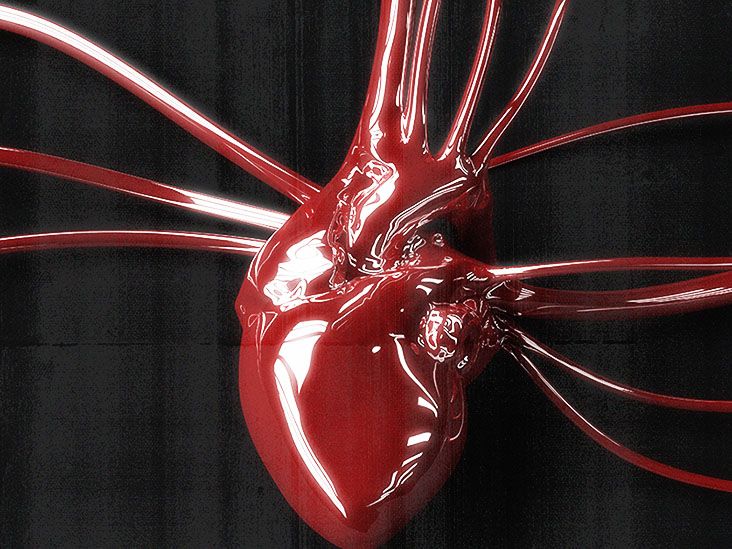Understanding Sudden Indentation on the Arm
If you notice a sudden indentation or dent on your arm, it can be alarming. An indentation on your arm may be caused by normal changes in muscle or fat. However, in some cases, it can signal an underlying medical condition like heart disease. Recognizingindentation on the arm as a potential heart disease symptom and seeking timely evaluation can lead to early diagnosis and treatment.
What Causes Sudden Indentation on the Arm?
There are several possible causes for indentation or depressions on the arm:
- Loss of muscle mass: As we age, muscle mass naturally decreases. This can lead to subtle changes in arm contour.
- Loss of fat: Fat loss in the arm, either from dieting or aging, can make the arm appear indented.
- Injury: Trauma from a fall, accident, or surgery can damage arm muscle or fat and lead to indentation.
- Nerve damage: Damage to nerves supplying the arm may cause muscle wasting and subsequent depressions.
- Underlying medical condition: Rarely, sudden arm indentation may signal an underlying condition like heart disease, stroke, or tumor.
When to See a Doctor
In most cases, mild indentation on the arm is harmless. However, it's important to see a doctor if you notice:
- A new indentation that appeared suddenly or has gotten worse quickly
- Severe or pronounced indentation - deeper than 1 cm
- Pain, numbness, color changes, or coldness accompanying the indentation
- Weakness or heaviness in the affected arm
- Other unexplained symptoms like shortness of breath or swelling
These features suggest an underlying medical condition may be causing the arm indentation.
How Arm Indentation Relates to Heart Disease
In some cases, a sudden indentation on the arm can be a sign of coronary artery disease - clogged arteries around the heart. Here's how it happens:
Underlying Mechanism
Fatty plaques can build up inside the heart's arteries over time. This is called atherosclerosis. As these plaques enlarge, they clog the arteries (coronary arteries) supplying oxygen-rich blood to the heart muscle. Narrowed coronary arteries mean the heart muscle isn't getting enough blood flow.
When blood flow is chronically reduced, the heart muscle develops collateral blood vessels to route blood around the blockages. This allows the heart to continue pumping normally - for a while.
Eventually, a plaque may rupture, causing a blood clot to suddenly lodge in the artery. This triggers a heart attack as blood supply to heart muscle is abruptly cut off.
How This Causes Arm Indentation
During a heart attack, heart muscle starts dying from lack of oxygen. Days later, the damaged heart muscle is replaced by scar tissue. This causes the heart to pump less efficiently.
Reduced cardiac output means less blood flow to the entire body. The arm muscles and fat may begin to shrink from decreased blood supply. This atrophy causes indentation on the arm surface.
Therefore, sudden arm indentation in an adult may signal a recent heart attack. The indentation appears because the damaged heart can't pump enough blood to nourish the arm tissues.
Which Arm Is Affected?
Indentation typically occurs on the left arm because the left side of the heart sustains the most damage during a major heart attack. The left ventricle, the heart's main pumping chamber, suffers loss of muscle tissue. This reduces left ventricular function, resulting in lower cardiac output.
Other Signs of Heart Disease
Along with arm indentation, several other surprising physical signs may indicate heart disease. Being aware of these can lead to earlier diagnosis and lifesaving treatment.
Erectile Dysfunction
Erectile dysfunction may occur years before a heart condition is diagnosed. Like the heart, the penis requires healthy blood vessels and good blood flow. Erectile dysfunction can be an early indicator of vascular problems that foreshadow heart disease.
Snoring
Obstructive sleep apnea causes snoring and daytime fatigue. It's linked with heart disease risk. Sleep apnea deprives the body of oxygen at night. This stresses the heart and raises inflammation, both of which increase the likelihood of cardiovascular problems.
Receding Gums
Receding gums expose more tooth surface and signal inflammation in the mouth. Gum disease is connected to atherosclerosis. Bacteria in the diseased gums enter the bloodstream, damaging blood vessels and promoting plaque buildup in the arteries.
Hair Loss
Male pattern baldness has been tied to increased heart disease risk. Hair follicles require robust blood flow. Hair loss related to vascular insufficiency may indicate circulation problems that can lead to heart disease.
Yellow Fatty Bumps
Xanthomas are fatty deposits that develop under the skin. These bumps filled with cholesterol may be a warning sign of atherosclerosis. Xanthomas often disappear with treatment of the underlying lipid disorder.
Clubbed Fingernails
Thickened nails curving down over the fingertips may result from low oxygen. This condition, called nail clubbing, can be a sign of heart disease reducing blood flow and oxygenation. Clubbing may also occur with lung disease.
Diagnosing Heart Disease
If you notice sudden arm indentation or other concerning symptoms, your doctor will evaluate your heart health. Diagnostic tests may include:
- Medical history - Important clues about cardiovascular risk factors like high blood pressure, high cholesterol, and smoking.
- Physical exam - Listening to the heart and feeling pulses to check for abnormalities.
- Blood tests - Assessing cardiac enzyme levels and cholesterol levels.
- Electrocardiogram - Recording the heart's electrical activity to detect heart damage.
- Stress testing - Monitoring the heart's function and blood flow while exercising.
- Echocardiogram - Using soundwaves to create images of the heart's structure and pumping action.
- Cardiac CT scan - Taking cross-sectional X-ray images of the heart's arteries.
- Cardiac catheterization - Inserting a thin tube into arteries and injecting dye to highlight blockages.
These tests can confirm if heart disease is responsible for sudden indentation on your arm.
Treating Heart Disease
If testing reveals heart disease, prompt treatment is key. Treatment options may include:
- Lifestyle changes - Following a heart-healthy diet, exercising, quitting smoking, and managing stress.
- Medications - Antiplatelet drugs, blood thinners, ACE inhibitors, beta blockers, and statins.
- Surgery - Coronary bypass to route blood around blockages or stenting to prop open arteries.
Treating any heart problems discovered will also help manage arm indentation stemming from reduced cardiac pumping function.
Improving Arm Contour
For arm indentation related to muscle atrophy and fat loss, the following may help improve arm contour:
- Eating a high-protein diet and staying hydrated
- Lifting light weights and exercising to maintain arm muscle
- Massaging arms to boost circulation
- Reducing salt to avoid fluid retention
- Considering liposuction to remove excess arm fat
However, contouring procedures are not usually recommended until any heart condition improves.
Preventing Heart Disease
FAQs
What causes sudden indentation on my arm?
Sudden arm indentation is most often caused by muscle atrophy or fat loss, which leads to a depression in the arm's contour. However, it can also be caused by nerve damage or an underlying condition like heart disease or stroke.
How does arm indentation relate to heart disease?
When a heart attack damages the heart muscle, the heart can't pump as efficiently. This reduces blood flow to the arms, causing the arm tissues to shrink. The resulting indentation indicates heart disease reduced the blood supply to nourish the arm.
What other signs may indicate heart disease?
Other surprising signs of heart disease include erectile dysfunction, snoring, receding gums, hair loss, yellow fatty bumps under the skin, and thickened fingernails. Being aware of these can lead to earlier diagnosis.
How is heart disease diagnosed?
Doctors use medical history, physical exams, blood tests, ECG, stress testing, echocardiogram, cardiac CT scans, and cardiac catheterization to diagnose heart disease. These tests can confirm if it's the cause of sudden arm indentation.
How can I prevent heart disease?
You can help prevent heart disease by living a healthy lifestyle - follow a heart-healthy diet, exercise regularly, maintain a healthy weight, don't smoke, limit alcohol, and manage conditions like high blood pressure.
Disclaimer: This article is for informational purposes only and does not constitute medical advice. Always consult with a healthcare professional before starting any new treatment regimen.
Related Coverage
Find out the signs, causes, diagnosis and treatment for mitral regurgitation, plus lifestyle tips to support a healthier heart....
Spot the bicuspid aortic valve symptoms, know when to get help, and find lifestyle and treatment tips to keep your heart healthy....
Varicose veins indicate poor circulation that can lead to cardiovascular issues like high blood pressure and arrhythmias causing heart palpitations....
Looking for Vyndamax Vyndaqel side effects? Learn what to expect, common reactions, serious warnings, and tips for managing safely....
Hypertrophic cardiomyopathy life expectancy is near normal; discover risk factors, survival, and treatments that extend life....
Is your heart struggling to pump blood effectively? Find comprehensive information on congestive heart failure, its symptoms, causes, and available treatments....
Can coughing spur premature ventricular contractions, also called PVCs? Learn why coughing can cause extra, skipped heartbeats in some people and when PVCs may indicate an underlying heart condition requiring evaluation....
COVID-19 heart inflammation can cause chest pain, fatigue, and rhythm issues. Find out signs, risks, diagnosis & treatment steps....
Find the 2025 Corlanor cost and see how coupons, the Amgen copay card, and 90‑day fills can cut your out‑of‑pocket cost....
Wegovy shows potential to help Crohn's disease patients struggling with unintended weight loss, malnutrition, and cardiovascular risks....








